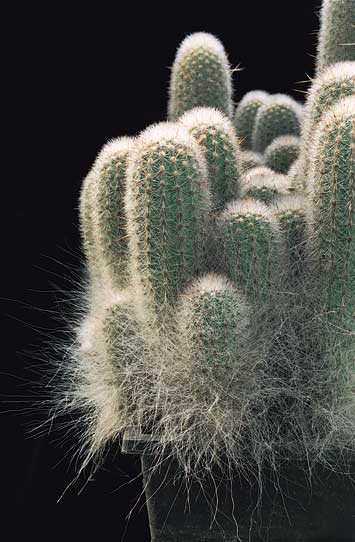This is a dwarf species allied to E. senilis and E. mirabilis. Like the latter, the juvenile growth is covered with long hair-like spines which soon give way to shorter, mature spination. In E. mirabilis this hair-like spination is present only in seedlings, while in this offering even rooted cuttings seem to revert to this neotenic condition. While E. senilis has pure white spination, in this species it is peppered with brown. Rooted cuttings of HBG 18707 (UCBG 64.768) grown from seed collected Aug. 9, 1964, by Paul Hutchison (# 6230), J. K. Wright and R. M. Straw along the road to Buldibuyo, on the east side of the Río Marañon, 5 km. above Chaqual, Prov. Pataz, Dept. La Libertad, Peru. $10.
Correction, published in the Cactus and Succulent Journal Vol. 75 (2), March - April, 2003
According to R. Ressler, this may be Thrixanthocereus longispinus F. Ritter, collected by K. Knize at El Chagual (not Chaqual). This is considered to be a synonym of Espostoa senilis (F. Ritter) N.P.Taylor.

Published in the Cactus and Succulent Journal, Vol. 74 (2), March - April, 2002